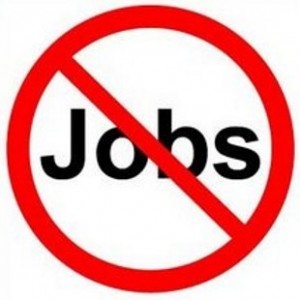National Small Business Week, which just wrapped up this past weekend, is the occasion for everyone and anyone in Washington to proclaim how much they love small businesses, which, after all, created two out of every three new jobs over the past three decades. The Obama Administration’s contribution to National Small Business Week, courtesy of the National Economic Council, is a “Congress To-Do List” presented in the recent report “Moving America’s Small Businesses & Entrepreneurs Forward: Creating an Economy Built to Last”.
I believe the single greatest obstacle to scale and grow businesses is the lack of candidates qualified for employment. As such, I read with great interest the NEC report’s policy recommendations for investing in worker skills and training. Sadly, they are largely a re-tread of two generations of failed federal programs for workforce development. But a careful analysis of the proposals and existing programs suggests a more effective approach, which I outline in an op-ed piece published today in the Huffington Post.
To its credit, the Administration has correctly framed the issue. The NEC report acknowledges that small businesses are reporting shortages of skilled personnel to fill critical roles even as we continue to experience high unemployment. The President’s proposed solution is an $8 billion Community College to Career Fund. The President appears to believe that lack of funding for job training initiatives at the community college level is an obstacle to creating pathways to employment. The American Graduation Initiative he proposed in 2009, for example, called for $10 billion in funding for community colleges, but received only $2 billion from Congress.
Lack of funding is not the problem. The problem is that the Community College to Career Fund, like its predecessors the Federal Workforce Investment Act (“WIA”) and the Job Training Partnership Act, does not exist to train the workers that the private sector desperately needs.
Consider the WIA tuition grants, administered by the “One-Stop” job centers of the Labor Department in local communities. The grants award up to $4,000 for approved courses at eligible training providers, typically community colleges and other public institutions. The federal government establishes a performance metric for states to receive federal funding: 75% of those receiving training must secure employment.
No surprise then that the states’ WIA annual reports reveal success in meeting performance metrics. After all, the state workers want to keep the federal funds flowing and with it, their own jobs. But the 75% rate is achieved by establishing barriers to entry that restrict access to training. Only the most determined and skilled can comply with the onerous WIA program requirements, the very people most likely to find jobs anyway. A review of state WIA annual reports of some of the most populous states that beat the 75% metric finds that only 2,000 or so displaced workers in those individual states received training grants. This does not come close to achieving the scale required to lower unemployment.
And I am skeptical that the people who attended workshops, met with facilitators, were counseled by case managers, passed three-hour tests of basic skills, certified job logs, and invested at least two months in completing all of the scheduled tasks required to at least be considered for WIA training grants, obtained employment at our most promising start-ups. The WIA training grants cover courses for “industry-recognized credentials”. The most entrepreneurial firms have disruptive business models and technologies. We have no use for people schooled in the status quo we seek to overturn. I believe that the President’s solution simply throws more money at failed training schemes. In my op-ed piece, I propose a better alternative.


